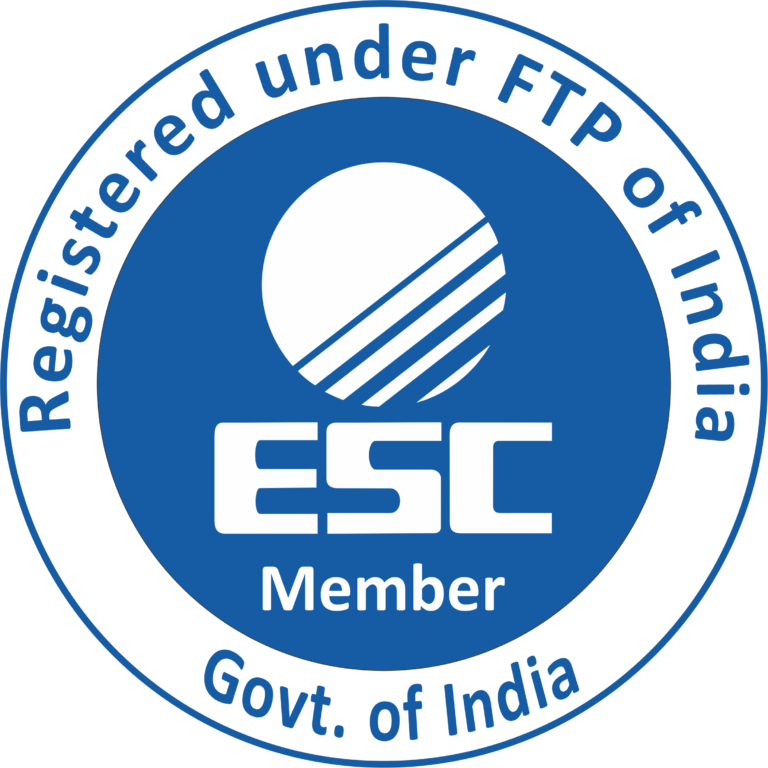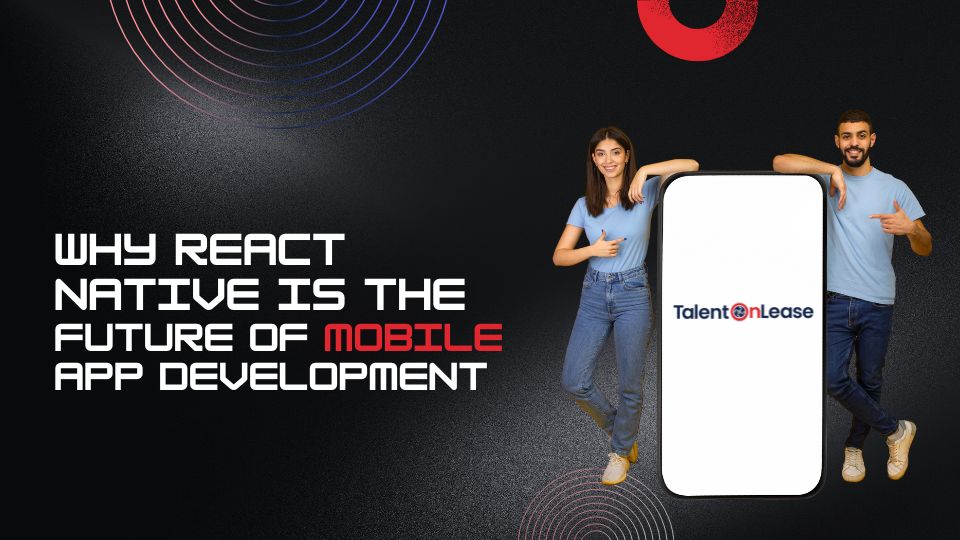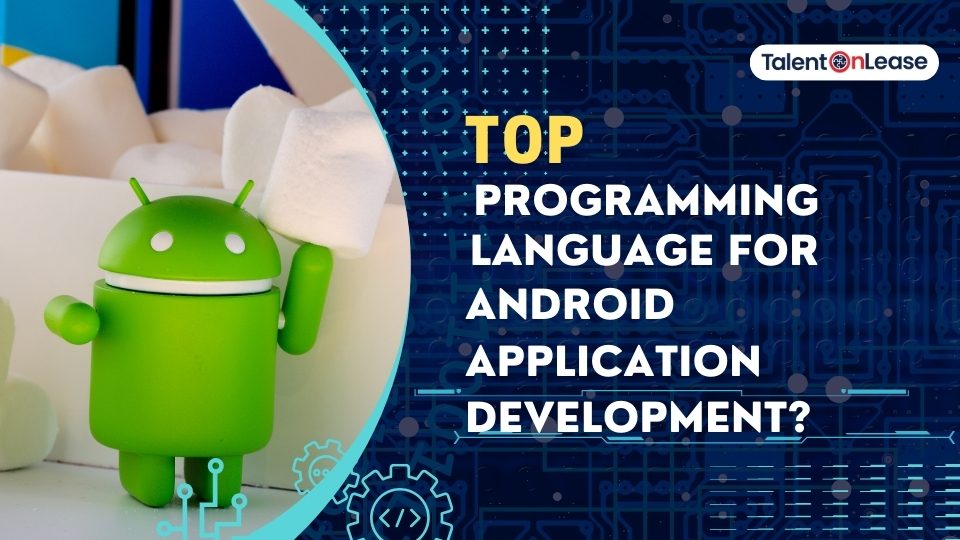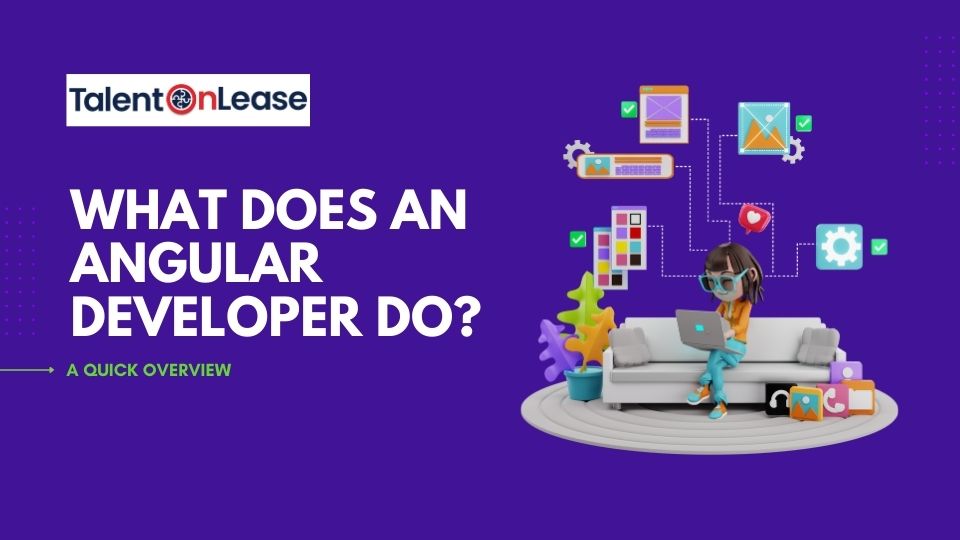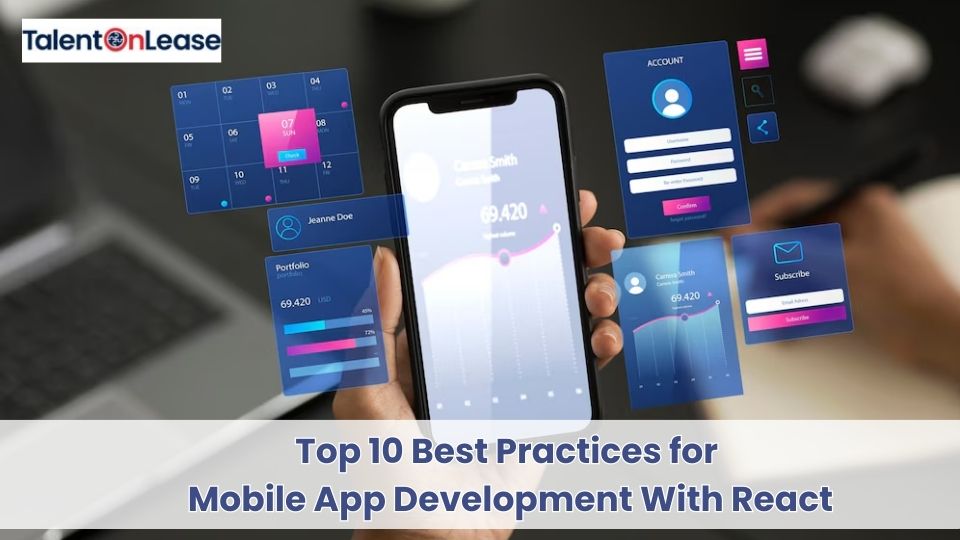What Does a Full Stack Developer Do? A Step-by-Step Guide to Success
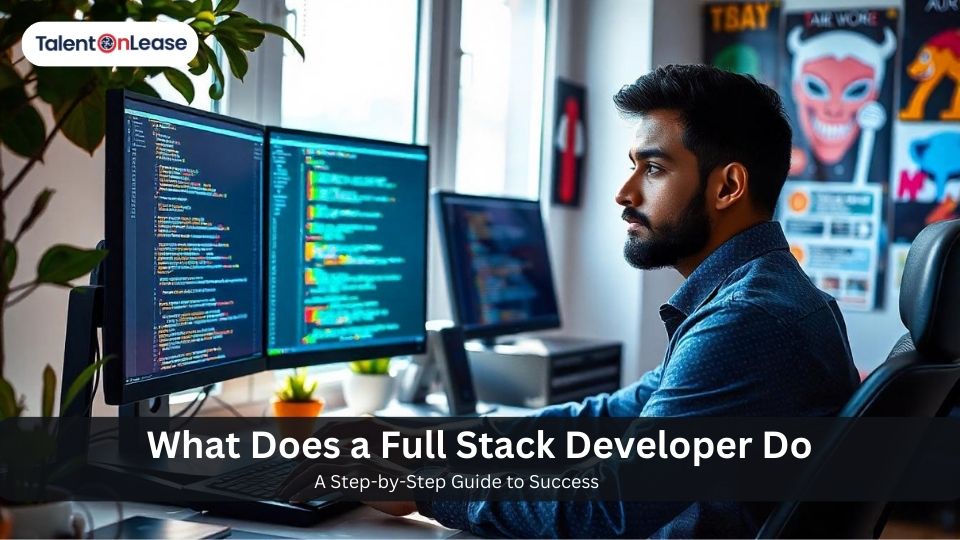
Being a Full Stack Developer can be a rewarding and valuable career in today’s rapidly growing tech industry. Full Stack Developers are like the Swiss Army knife of software development, skilled in both front-end (client-side) and back-end (server-side) development.
This versatility enables them to work across all layers of the software stack, making them indispensable for projects that require end-to-end development and reducing the need for specialized coders. As a result, Full Stack Developers are highly sought after in the job market.
In this guide, we will explore what a Full Stack Developer does, the essential skills they need, and how to become one. By the end, even if you are new to IT, you will have a clear understanding of Full Stack Development. Let’s dive in!
What Is Full Stack Development?
Full Stack Development refers to working on both the client-side (front-end) and server-side (back-end) of a web application. A Full Stack Developer is proficient in handling both aspects, ensuring seamless communication between them.

- Front-End: Handles the parts of a website users see and interact with, such as layout, design, and user experience.
- Back-End: Deals with server logic, database management, and API interaction behind the scenes.
A Full Stack Developer can work on an entire project from start to finish, making them highly versatile.
What Does a Full Stack Developer Do?
Full Stack Developers are software professionals with expertise in various tools and technologies needed to build both client and server software. Their primary responsibilities include:
- Front-End Development: Creating the visible, interactive part of the website
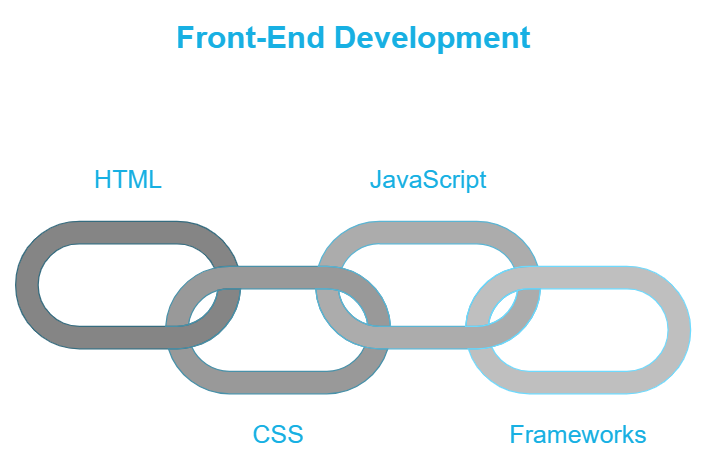
- Back-End Development: Managing server-side operations, database handling, and program logic.
- Database Management: Handling data storage, retrieval, and organization.
- Debugging: Identifying and fixing code issues.
- API Integration: Connecting various parts of the software, such as databases and third-party services.
Understanding Front-End Development
The front-end is the user-facing part of a web application, responsible for the design, feel, and functionality of the website. Full Stack Developers working on the front end must focus on:
- Layout and Design: Creating visually appealing websites.
- User Experience (UX): Ensuring the website is easy and efficient to navigate.
- Device Compatibility: Making websites responsive to work on all devices, including mobile, tablets, and desktops.
Key Front-End Technologies:
- HTML: The foundation of web pages, structuring the content.
- CSS: Styling the layout, colors, fonts, and appearance of web pages.
- JavaScript: Programming language for interactive elements such as pop-ups, animations, and dynamic content.
Front-End Frameworks and Libraries:
- Angular.js: A framework for building dynamic web applications.
- React.js: A library used to create user interfaces for single-page applications.
- Bootstrap: A toolkit for creating responsive websites quickly with pre-designed components.
Exploring Back-End Development
The back end powers the website’s functionality and manages the server, database, and logic behind the scenes. The back end ensures that:
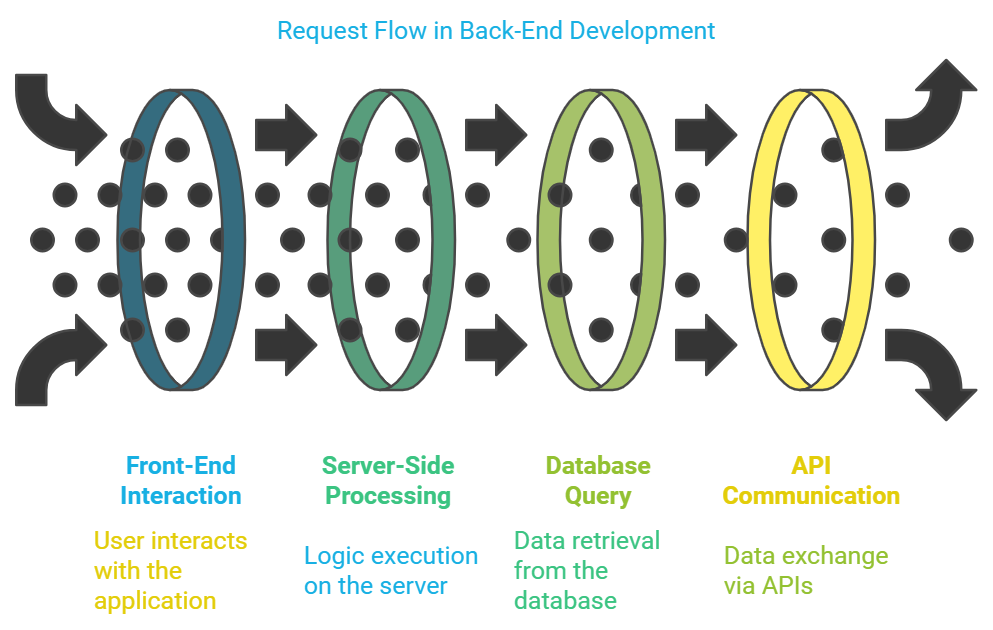
- Database Management: Data is stored and retrieved efficiently.
- Server Management: The website is accessible, loads quickly, and remains secure.
- API Integration: The front end connects seamlessly with the back end and third-party services.
Common Back-End Technologies:
- PHP: A server-side scripting language for web development.
- Python: Popular for web development due to its simplicity and speed.
- Java: A robust programming language for scalable and maintainable backend development.
- Node.js: A runtime environment that allows developers to use JavaScript for backend development
Back-End Frameworks:
- Express.js: A Node.js framework for building web applications and APIs.
- Laravel: A PHP framework known for its elegant syntax and extensive features.
Programming Languages for Full Stack Developers
Full Stack Developers need proficiency in various programming languages for both front-end and back-end development. Some of the key languages include:
Programming Languages and Purpose
| Language | Purpose |
|---|---|
| HTML | Structuring content for the web. |
| CSS | Styling web pages. |
| JavaScript | Client-side and server-side development. |
| PHP | Server-side scripting. |
| Python | Server-side development. |
| SQL | Managing relational databases. |
| NoSQL | Managing non-relational databases. |
Essential Skills for Full Stack Developers
To become a successful Full Stack Developer, both technical and soft skills are essential. Key skills include:
Python vs Java Full Stack Developer comparison, understanding frameworks, databases, and project management.
- Front-End Development: HTML, CSS, JavaScript, and frameworks like React or Angular.
- Back-End Development: Server-side languages such as Python, PHP, Node.js.
- Database Management: Knowledge of SQL and NoSQL databases.
- Version Control: Using Git to track code changes.
- Debugging: Identifying and fixing bugs in both front-end and back-end code.
- Problem-Solving: Breaking down complex problems into manageable tasks.
Learning with Frameworks and Libraries
Frameworks and libraries are crucial for accelerating development and ensuring well-structured, cross-platform code. Popular options for Full Stack Developers include:
| Front-End Frameworks | Back-End Frameworks |
|---|---|
| Angular.js | Express.js |
| React.js | Laravel |
| Bootstrap |
Databases in Full Stack Development
Managing data is a critical aspect of Full Stack Development. Full Stack Developers work with two main types of databases:
- Relational Databases: Managed using SQL (Structured Query Language), they store data in a structured, tabular format. Examples: MySQL, PostgreSQL, Microsoft SQL Server.
- Non-Relational Databases (NoSQL): Store data in a more flexible format, often using documents similar to JSON. Examples: MongoDB, Cassandra.
Debugging and Problem Solving

Debugging is a vital part of Full Stack Development. Developers frequently encounter bugs or issues in their code that must be resolved for the application to work properly.
- Finding Errors: Use tools like browser developer consoles, server logs, or debugging software to identify the problem.
- Analyzing Code: Determine which part of the code is causing the issue.
- Fixing the Bug: Implement the appropriate solution to eliminate the bug.
Problem-solving is another crucial skill for Full Stack Developers. Whether optimizing database queries, fixing slow-loading pages, or resolving compatibility issues, Full Stack Developers must be able to tackle challenges effectively.
Job Opportunities and Salary Expectations
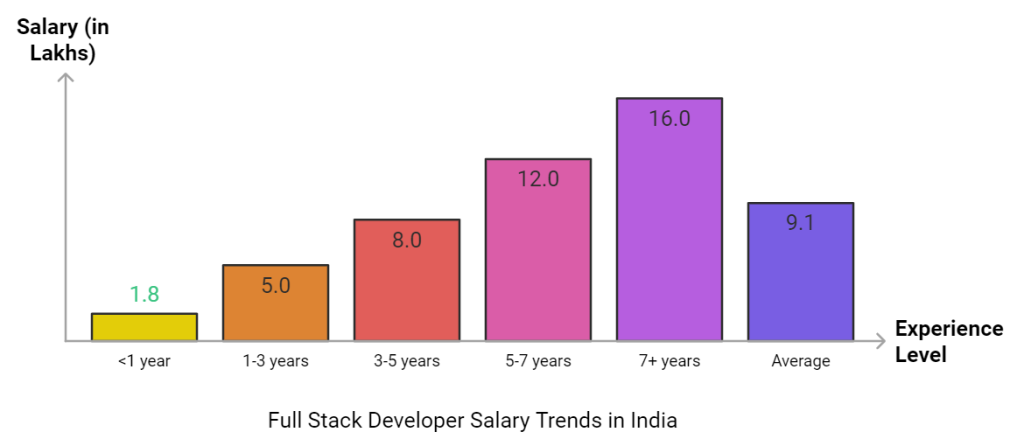
The graph illustrates the salary trends for Full Stack Developers in India based on their experience level. As the experience level increases, so does the average salary. Developers with less than a year of experience typically earn around 1.8 lakhs per annum, while those with 7+ years of experience can expect to earn an average salary of 16 lakhs per annum. The overall average salary for Full Stack Developers in India is 9.1 lakhs per annum.
Full Stack Developers are in high demand, with competitive salaries. In India, the average salary for a Full Stack Developer is around INR 9,00,000 per year. Globally, companies like Tata Consultancy Services, IBM, and Wipro actively seek professionals with Full Stack expertise. As experience grows, so does earning potential, with senior Full Stack Developers commanding higher salaries.
How to Become a Full Stack Developer
Here are the steps to becoming a Full Stack Developer:
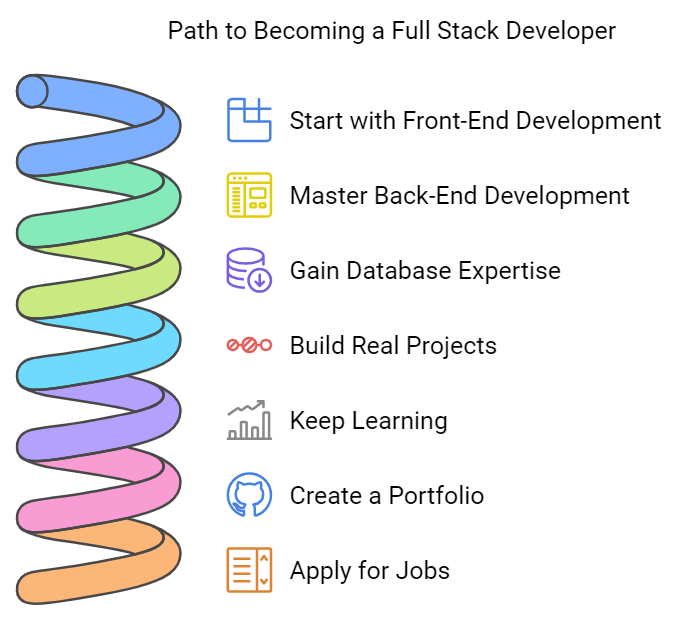
- Start with Front-End Development: Learn HTML, CSS, and JavaScript.
- Master Back-End Development: Take courses on server-side languages such as Python, PHP, or Node.js.
- Gain Database Expertise: Understand both SQL and NoSQL databases.
- Build Real Projects: Apply your knowledge by building real web applications.
- Keep Learning: The tech industry evolves quickly, so stay up-to-date with new tools and trends.
- Create a Portfolio: Showcase your projects on platforms like GitHub.
- Apply for Jobs: Once confident, start applying for Full Stack Developer roles.
Hire Full Stack Developers to build and manage seamless, scalable applications for your business needs.
Looking to Hire Full Stack Developers?
If you’re looking to hire Full Stack Developers or other tech professionals, Talent On Lease can help. As an IT recruitment and staffing agency, we specialize in connecting businesses with the right talent for their development needs. Our team can match you with top professionals who deliver results. With Talent On Lease, you can build your dream team and thrive in the competitive tech world.
FAQ
A Full Stack Engineer is a software person who works on both the front-end (client-side) and back-end (server-side) of web apps. They do the whole development process, from creating the UI to server logic and database management, so everything works together nicely.
Skills for a Full Stack Software Developer include HTML, CSS and JavaScript for front-end and server-side languages like Python, PHP or Node.js. Knowledge of database management (SQL and NoSQL) and frameworks like React.js, Angular.js and Express.js is also required.
Client-side is about the visual and user experience of a website, layout, design and interactivity. Server-side is about the behind-the-scenes stuff, data storage, server logic and API integration, which is required for the application to work.
To be good at Full Stack, you should learn HTML, CSS and JavaScript for the front end. PHP, Python, and Node.js are required for the back end. Understanding of SQL for relational databases and familiarity with NoSQL databases like MongoDB will be helpful.
Full Stack Engineers are in demand across various industries, tech startups and established companies. Salary for a Full Stack Engineer varies widely based on experience and location.
